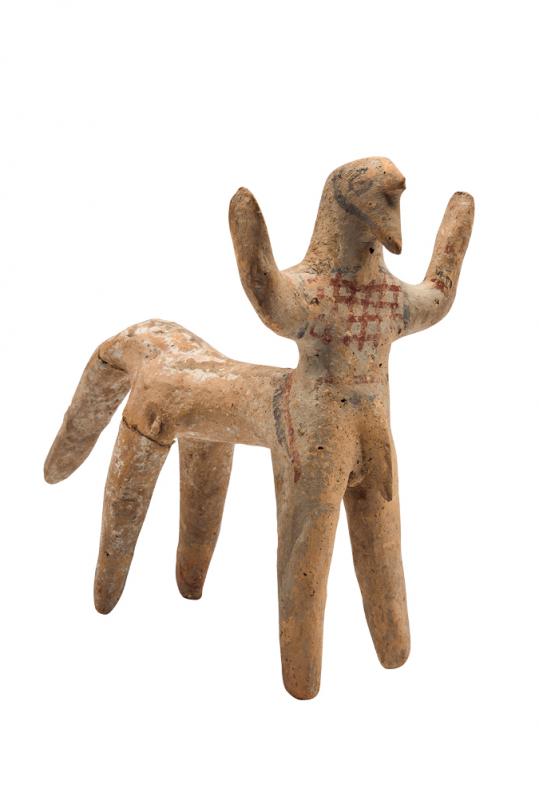
Terracotta figurine of a Centaur
Terracotta figurine of a Centaur
A Boeotian figurine of a Centaur with raised arms and prominent genitalia. The earliest example of the type is the superb Centaur from Lefkandi on Euboea, which is dated to the 10th c. BC. During the Geometric and Archaic periods similar figurines were made also in Attica, Corinth and Boeotia. The mythical Centaurs were daemonic hybrid creatures with human upper part and the lower body of a horse. They dwelt in the woods, mainly of Pelion and Arcadia, were inordinately strong and usually very violent and aggressive. Their interpretation is difficult, not only because of their dual nature but also because among them were two benevolent figures, Cheiron, who knew all the arts and was mentor of Achilles and other heroes, and Pholos, who helped Herakles in his battle against the other Centaurs. Such contradictions may have been intended to emphasise the opposition between unreasoning and reason (or between ignorant and sapient beings), and to juxtapose man’s primitive instincts and impulsive nature to the cultivation and nobleness offered by civilized life and education. In that sense, they may have reminded people that measure, moderation and social equilibrium should prevail over primordial whims and personal desires. This very spirit is expressed by the Centauromachy (battle between men and Centaurs), one of the most popular artistic themes in Classical antiquity which appears, among others, in the iconographic programme of the Parthenon. The much humbler Archaic figurines may have had a plain apotropaic function, being used to avert evil and misfortune.





